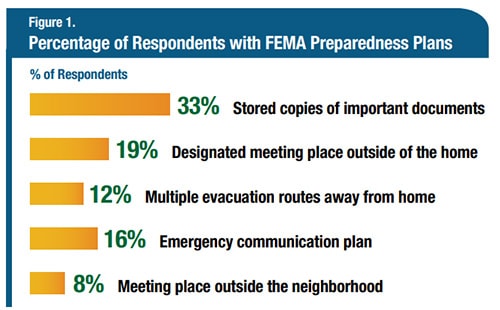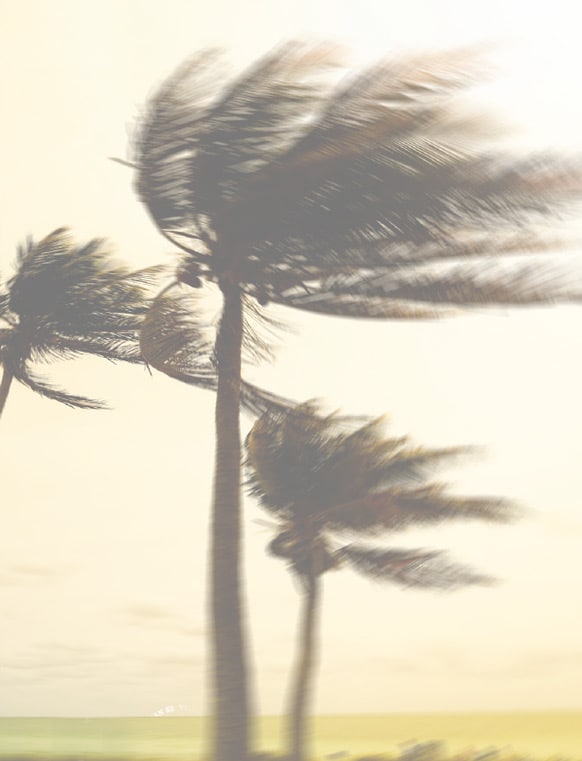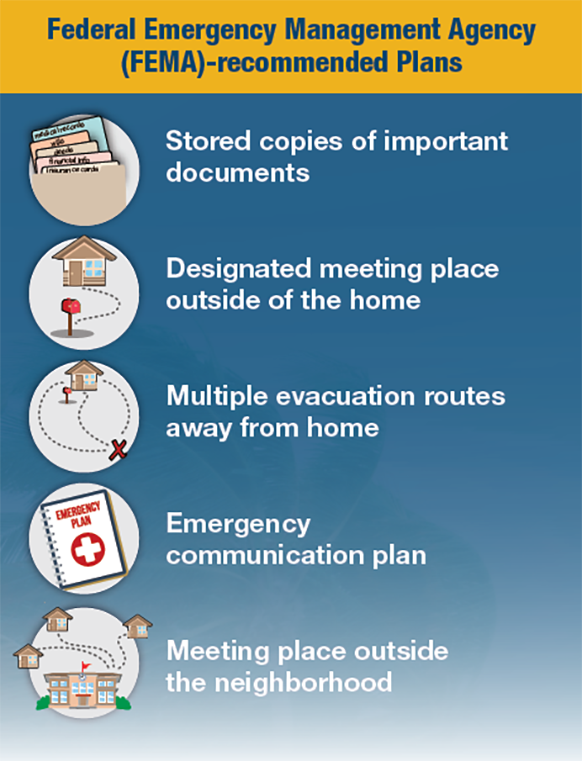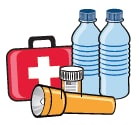Household Preparedness Fall 2021
See corresponding Household Preparedness Fall 2021 – Long Description »

OVERVIEW
When preparing for natural disasters and other emergencies, having a plan and an emergency supply kit are key. In spring 2021, a survey of adults in the United States assessed preparedness levels and emergency supply kit possession. We conducted surveys in Fall 2020 and Spring 2021. We now report the results from our Fall 2021 survey. Results show that many people still may not have these important items to make them ready for a disaster.
METHODS
CDC analyzed data collected through Porter Novelli’s (PN) FallStyles survey. The survey was conducted in fall 2021, with 3,553 adults from across the country.
The survey included 10 questions related to preparedness and emergency supply kits, such as whether people had an emergency supply kit, what items were included in the kit, and whether they had ever experienced a natural disaster. Respondents were also asked which of the following Federal Emergency Management Agency (FEMA)-recommended plans they had:
RESULTS
- 56% of respondents experienced at least 1 natural disaster such as a hurricane, earthquake, wildfire, or tornado.
- 57% of respondents said they would evacuate during a large-scale disaster if asked to do so. The most commonly reported barriers to evacuation were concern for leaving pets (21%) and concern about leaving property (20%).
Overall, preparedness levels among respondents were low:
- 44% of respondents had none of the FEMA-recommended plans.
- Less than 3% of respondents had all the FEMA-recommended plans.
- The most common plan was stored copies of important documents (33%) (Figure 1).

Few respondents had an emergency supply kit:
- Only 1 in 3 (36%) of respondents had an emergency supply kit.
- The most common items in their kit were a flashlight, medical supplies, and water.
- Those living in the Midwest or Northeast were 55% less likely to have an emergency supply kit than those in Southern states.
- Respondents were less likely to have an emergency supply kit if they were female; identified as non-Hispanic White; lived in the Midwest, West, or Northeast; or have at least a high school education.
Beliefs play an important role in preparedness
- Those who feel confident they know how to prepare for a disaster are almost 5 times as likely to have a kit and 3 times as likely to be prepared.
- Those who believe an emergency supply kit will improve their chance of surviving a disaster are 1.5 times as likely to be prepared.
- Those who believe an emergency supply kit costs a lot of money are 19% less likely to have a kit and 30% less likely to be prepared.
- Those who believe the risk of their household being affected by an infectious disease is greater than that of a disaster are 37% less likely to have a kit.
Respondents more likely to be prepared
- Have at least a high school education
- Live in a single-family home
- Own a home
- Are married
- Have children living in the home
- Earn a household income of $50,000 or more
Source: FallStyles 2021


